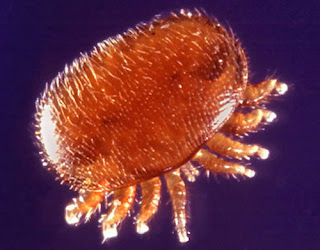Hello again everyone, here is the long discussed data analysis post (finally!). In this post, I'll be discussing the kind of data we got from this experiment.
As I mentioned in previous posts, we observed the temperature, humidity, weight, and carbon dioxide concentration of six hives over about a month. We used iButton sensors for the temperature and humidity data, scales for the mass data, and 5000 ppm NDIR CO2 sensors for the carbon dioxide concentration data. The temperature and relative humidity data from the iButtons were recorded in centigrade and percent humidity, while the CO2 concentration and mass data were recorded in mA, or milliamps. Most electronic scales measure mass by converting the pressure put on the plate by an object into electrical signals. While some electronic scales convert the electrical signals into a mass readout on a display, the scales we used to weigh our hives sent the raw information (in mA) to our data logger where we would download the data later. Likewise, the NDIR CO2 sensors that we used take the spectra of the gasses within the sample space and light detectors at the end of the tube convert that data to mA.
So, how is all this information relevant? Well, in order to properly analyze our mass and CO2 concentration data, I need a way to convert them from mA to grams (for the mass data) and parts per million (for the CO2 concentration data). To convert the output from the scales into grams, Mr. Meikle usually uses a "weight calibration curve", which is a linear conversion of mA to grams. A similar method is used to convert mA to ppm. However, last time I was at the lab (Monday 4/11) Mr. Meikle couldn't find the weight calibration curve or the conversion from mA to ppm. He hasn't used them in a while but says that his assistant Milagra knows where they are. Long story short, until I get the calibration curves I can't properly analyze my mass or CO2 data.
We have also run into an issue with our iButton sensors. The iButton sensors are (as I mentioned in a previous post) small temperature and RH (relative humidity) sensors. They look like watch batteries and aren't connected by a wire to a data logger (which has nearly unlimited memory for our purposes). Given their size and the fact that they are not connected to a larger database, the iButtons have short memory spans relative to other data logging equipment. This is something that we neglected to account for. We set our iButtons to record temperature and RH data every 600 seconds (or ten minutes). We "missioned" the sensors (which just means we set them to start recording) on February 29th, 2016. When we checked the data output from the sensors on Monday, we discovered that they had stopped recording on March 9th, 2016. Each sensor had taken about 2000 data points before stopping. When we "missioned" the sensors, we set them to "no rollover", which means that they are set to stop recording once their data limits are reached instead of replacing old data with newly recorded data.
Between these two dates (February 29th and March 9th), we managed to put in all of our amitraz treatments. However, we only managed to put in one of the three necessary thymol treatments in the thymol hives (each hive requires three treatments) by March 9th. This is a slight setback for our experiment, but we still have 2000 salvageable data points from each iButton sensor. In addition, each thymol treatment is quite powerful so we are at least be able to observe the short-term reactions of the bees to thymol.
That's all for this post. In my next post I'll be discussing how we determine the mass of brood in our hives, as well as any updates on the data situation. Expect that post sometime this weekend!













